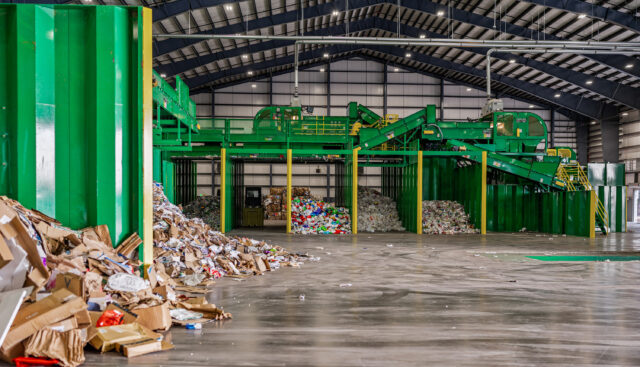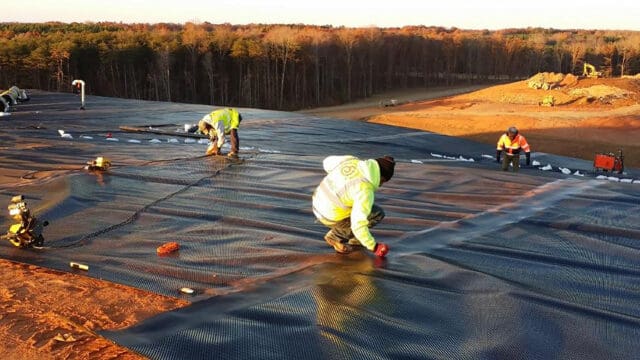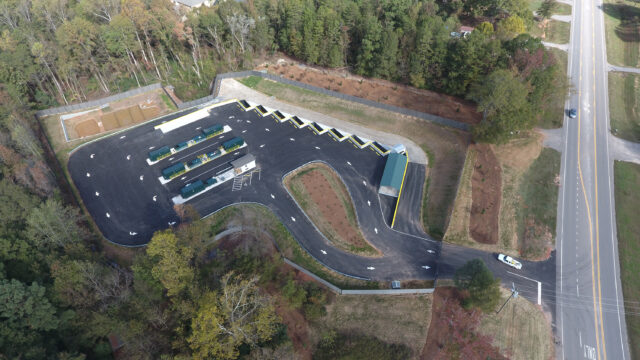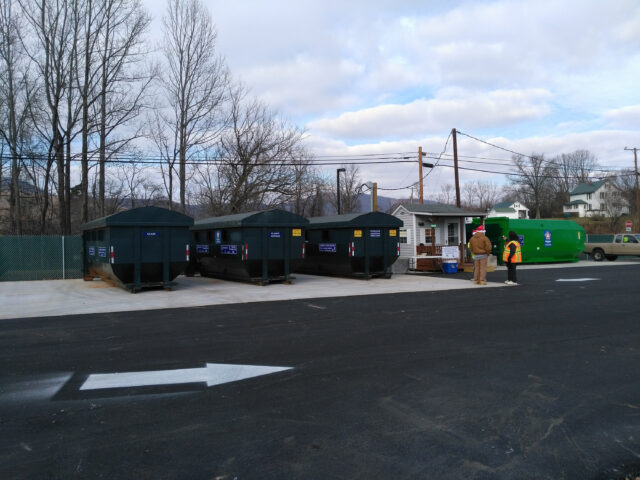






In Situ Thermal Desorption at Martinsville Closed Landfill – Martinsville, VA
ISTD Remediation Achieves an Average 96% Reduction of VOC Concentrations in Landfill Solvent Pit Soils
The Martinsville Sanitary Landfill is a closed, unlined, municipal solid waste facility owned and maintained by the City of Martinsville, Virginia. From the early 1970s into the early 1980s, there were two unlined, open solvent pits located upgradient of the landfill that were designated for disposal of liquid chemical wastes—primarily used paints, varnishes, and solvents produced by the local furniture and textile industries. Periodically, the liquids in the pits were set on fire to burn.
As a result, a plume of groundwater contamination containing numerous volatile organic compounds (VOCs) extends under the landfill from the two solvent pits. The facility has been under a groundwater Corrective Action Program involving monitored natural attenuation since 2005. However, the soil contamination in the solvent pits was continuing to feed the groundwater plume, so the contaminant concentrations were not decreasing as intended, with some concentrations even increasing over time.
In 2016, at the request of the Virginia Department of Environmental Quality (VDEQ), LaBella conducted further assessment of the solvent pits. Soil sampling found total VOCs as high as 12,675 mg/kg (parts per million) and indicated that there were over 105 tons of VOCs in the soil within the two solvent pits.
Average total VOC concentration in solvent pit #1 before ISTD
Average total VOC concentration in solvent pit #2 before ISTD
Highest total VOCs identified in soil sampling before ISTD
Tons of VOCs in the soil within solvent pits 1 & 2 before ISTD




LaBella investigated several remedial technologies, evaluating the applicability, effectiveness, time required, and cost. Options included:
- Excavation and ex situ incineration in an on-site soil burner
- Enhanced bioremediation using injection of chemicals to accelerate natural biodegradation of the contaminants by bacteria in the soil
- Air sparging and soil vapor extraction
- In situ thermal desorption (ISTD)
Based on the site’s geology, the pit size and depth, and the contaminant types and concentrations, we concluded that ISTD was the most appropriate technology for the site. ISTD was expected to be the fastest as well as the most cost-effective way to remediate the solvent pit soils.
ISTD involves heating the subsurface to temperatures around the boiling point of the contaminants, thus fully releasing the volatile compounds in the soil and groundwater to be drawn off as steam and vapor through a vapor collection system. The vapors are then treated to remove most of the VOCs before being released into the atmosphere.
We submitted an Interim Measures Work Plan proposing ISTD, which was approved by VDEQ in October 2016.
LaBella prepared design specifications and a Request for Proposals to solicit bids for turn-key implementation of the ISTD remedy for the two solvent pits. The winning proposal was from Good Earthkeeping Organization for an ISTD system using natural gas thermal conductive heating.
Days the ISTD system operated
Tons of VOCs removed as vapors through ISTD
Gallons of condensate recovered through ISTD
Average reduction of VOC concentration in soils after ISTD
An ISTD Success Story
Installation of the ISTD system began in February 2019 and the system commenced operation three months later, operating for a total of 165 days before being shut down in November 2019. More than 141.5 tons of VOCs were removed as vapors from the two solvent pits, plus 32,100 gallons of condensate that were also recovered. Confirmatory soil sampling after the ISTD remediation indicated an average 96% reduction of VOC concentrations in the soils in the two pits.
The majority of the VOC vapors extracted were fed back into the heater wells as supplemental fuel, effectively destroying those VOCs while increasing the system’s efficiency. The off-gas treatment system achieved greater than 95% removal efficiency during the entire project.
The ISTD solution to the VOCs in the two solvent pits at the Martinsville Sanitary Landfill was a success, with concentrations of VOCs greatly reduced. As these solvent pits were the primary source of groundwater contamination at the facility, we expect to see a reduction in the VOC concentrations in the groundwater over time. As of February 2025, total VOC concentrations are significantly lower than before the ISTD remedy was initiated.











